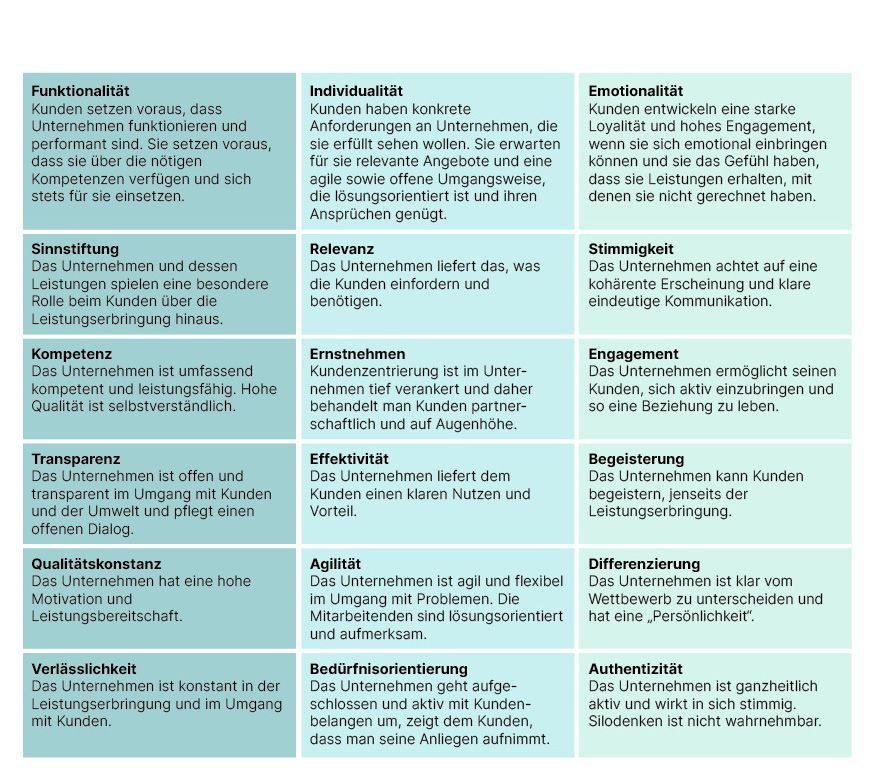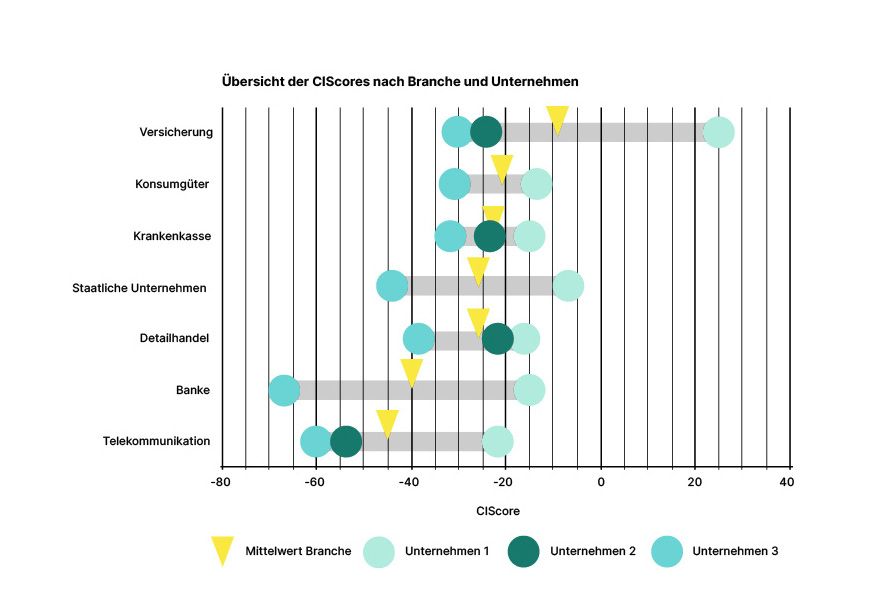
Branchenstudie: Wie Unternehmen ihre Kunden in den Fokus rücken
Kundenzentrierung ist ein zentraler Erfolgsfaktor für Unternehmen. Der CI-Score misst die Wahrnehmung der Kundenzentrierung aus Sicht der Kunden.
Kundenzentrierung ist ein entscheidender Erfolgsfaktor für Unternehmen. Aber wie wissen Sie als Organisation, wo Sie stehen? Der Customer Impact Score (CI-Score) bietet eine Lösung. Entwickelt von der Hochschule Luzern, ist der Key Performance Indicator (KPI) ein empirisches Werkzeug, um die Kundenzentrierung in Unternehmen zu messen und zu verbessern. Anhand einer standardisierten Kundenbefragung evaluiert er den Grad der erlebten Kundenzentrierung bei den Kunden selbst.
At apple, the customer is, and will always be, at the center of everything we do.
Der CI-Score basiert auf über 100 Kriterien und wurde in unterschiedlichsten Branchen validiert, um Praxisnähe, Aussagekraft und Relevanz zu gewährleisten. Im Folgenden werfen wir einen genaueren Blick auf den CI-Score und seine Anwendung in der Geschäftswelt.
CI-Score Marktstudie 2022
Im Rahmen einer Marktstudie 2022 wurden 19 Schweizer Unternehmen anhand des CI-Scores evaluiert. Ausgehend von 15 Kriterien, die den drei Themengruppen Emotionalität, Individualität und Funktionalität zugeordnet werden können, zeigt die Befragung, wie kundenzentriert die gemessenen Organisationen aus Sicht der Kunden sind.

Der CI-Score misst nicht nur, was der Kunde erlebt, sondern generell die Faktoren, die einen Einfluss auf das Kundenerlebnis haben. Der Branchenvergleich zeigt, dass die Kriterien der Emotionalität im Vergleich zu denen der Funktionalität und Individualität am schlechtesten bewertet werden.
Branchenvergleich
In den sieben analysierten Branchen zeigen sich Unterschiede im Grad der Kundenzentrierung der einzelnen Unternehmen. Bei den Krankenkassen und im Detailhandel sind die Unterschiede geringer, was auf eine konsistente Kundenwahrnehmung innerhalb der Branchen schliessen lässt. Bei Banken und Service-public-Unternehmen gibt es jedoch grosse Unterschiede zwischen den CI-Scores der einzelnen Anbieter.

Auffallend ist, dass die Durchschnittswerte der Marktstudie alle negativ sind. Dieses Ergebnis steht in einem deutlichen Kontrast zur Branchenstudie des CC-Score (der die externe Kundenzentrierung aus Sicht der Mitarbeitenden misst) (HSLU, 2017), bei der alle Durchschnittswerte positiv sind. Damit zeigt sich eine deutliche Diskrepanz: Bereits unternommene Massnahmen der Unternehmen, die die Mitarbeitenden zu ihrer Einschätzung bewegen, müssen bei den Kund:innen erst noch ankommen.
Der CC-Score als Pendant
Der Customer Centricity Score (CC-Score) bildet das Komplementärprodukt zum CI-Score und widerspiegelt die interne Sicht der Mitarbeitenden. Gemeinsam bilden die beiden Scores die Basis, die nötige Basis, um die Kundenzentrierung einer Organisation ganzheitlich auszuwerten und nachhaltige Verbesserungen abzuleiten.
Interessiert?
Der Customer Impact Score ist als Studie erhältlich. Laden Sie jetzt die Zusammenfassung der Marktstudie Schweiz 2022 herunter und erhalten Sie Einblick in die Messung der Kundenzentrierung aus Kundenperspektive.


